We test the Yamaha Moro 07: an eMTB that breaks down prejudices and has conquered us
When a company like Yamaha, globally known for being one of the main motorcycle manufacturers, designs an eBike, we need to pay attention. And if we also tell you that Yamaha released the first electric bike in Japanese market 30 years ago, it is clear that the Moro 07, far from being an experiment, is a serious alternative in the market. We have tested it thoroughly and here we tell you all about it.
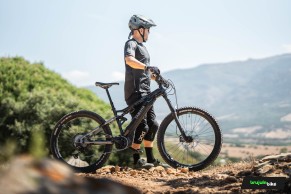
Yamaha Moro 07: the eBike with the most motorcycle inspiration
Yamaha has almost 70 years of experience in the motorcycle sector and it is no surprise that the design of the Yamaha Moro 07 clearly shows the contribution of motorcycle engineering in the frame, differentiating itself greatly from everything we know in the sector.
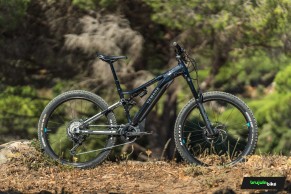
RECOMENDADO

What would you do if you won the lottery? This cyclist bought himself a €20,000 bike
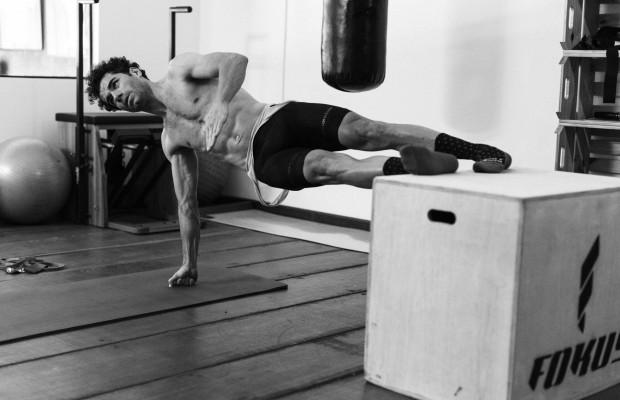
The best exercise routine to do at home
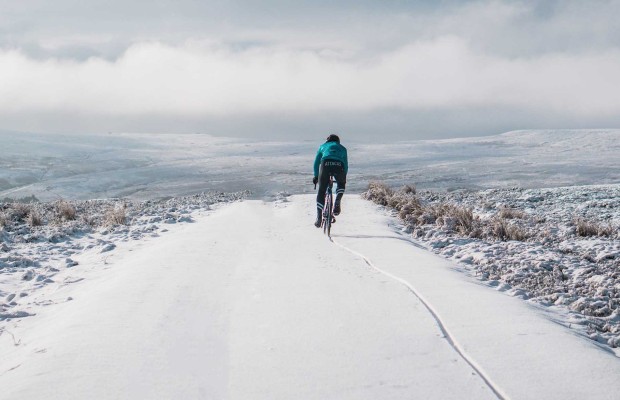
Benefits of training in the cold
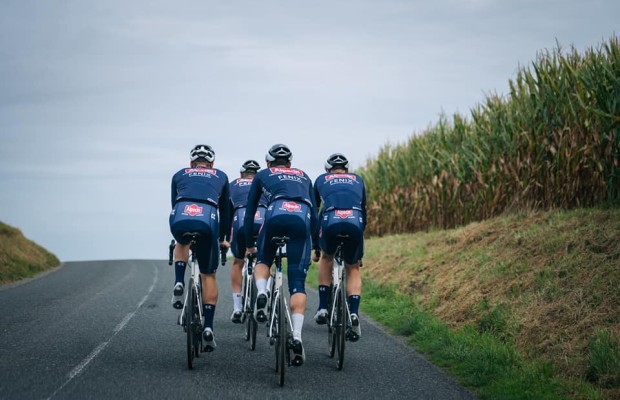
The cyclist's patience: how long, gentle training sessions build your best season

Tips for cycling in the rain

25 cycling gifts ideas to get it right
The Yamaha Moro 07 is an eBike with 27.5" wheels that offers suspension travel of 160mm in the front wheel and 150mm in the rear wheel.
The construction of its aluminum frame is based on the use of two symmetrical tubes, both for the upper tube and the diagonal one. They call it Dual Twin and it seeks the optimal balance between rigidity and flexibility.
In this way, the battery is not integrated inside the diagonal tube, as is common nowadays, but it is placed in the space left by the frame, with a protector at the bottom and exposed at the top.
Although it is not as well integrated as if it were hidden, the truth is that it also does not remind us of when batteries were an unaesthetic attachment inside the main triangle.
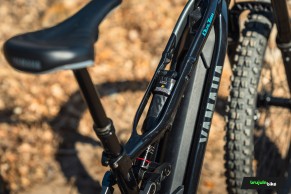
Regarding the upper part, the separation of the two tubes that make up the frame allows the shock absorber to be housed between them, reducing the height of the frame, which will result in great freedom of movement.
In the steering area, there is good work with aluminum. The diagonal tubes join and widen to form a large beam, to which both upper tubes also join before meeting the steering tube.
In the rear triangle, we find tubes with a studied design in terms of shape, such as the seatstays, which are flat on the inside and with several edges on the outside. The junctions of these tubes of the rear triangle with the forged pieces, found at their ends, are not as aesthetic, with poorly disguised welds.
The suspension linkage has a fairly decent finish, with recesses on its outer part to remove unnecessary material. The attachment of this to the frame is not as well integrated, as it is done through a slightly large triangular piece, since the pivot point, due to the suspension design, is very far from the vertical tube.
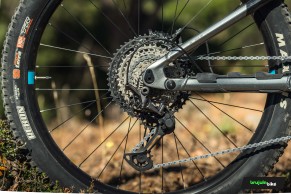
The suspension design is based on a 4-Bar system, with a pivot point on the chainstays of the Horst Link type. This contributes to the 150mm of rear travel it offers being sensitive and its independence from braking forces being optimal.
The Yamaha Moro 07 is an eBike that, from the beginning of its design, seems to have taken into account at all times that it is an assisted bike. It is not something that surprises us much coming from a motorcycle brand like Yamaha. This fact is noticeable in details such as the absence of a bottle cage mount but, above all, in the geometry.
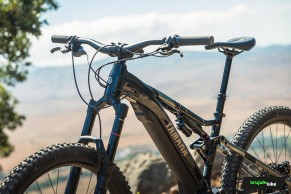
In general, we find a modern geometry, although not going to the most radical trend. A 66.3° head angle is reasonably slack but still maintaining a certain balance. The reach of the frame is 437mm in size M, which is also a quite moderate measurement compared to the very long frames that are seen lately.
But where the Moro 07 completely stands out from the common trend is in the length of the chainstays and the angle of the seat tube. Chainstays of 464mm are surprisingly long, especially for a bike with 27.5" wheels. This measurement is accompanied by a rather relaxed seat tube angle. The technical sheet indicates 70.3°, but we understand that it is the real measurement and not the effective one, which is the one that really influences our position. Our feeling is of a tube not as vertical as is common nowadays but not as laid back as that 70.3° measurement would indicate.
It is clear that the Yamaha is not the typical eBike that largely inherits the geometry of a muscular bike but, aware that it will have assistance, tries to take advantage to enhance some aspects. And specifically, this long chainstay length favors, as we will tell you later, the most challenging climbs.
Yamaha PW-X3 Motor
One of the star elements of this bike is, without a doubt, its motor unit. This bike can boast that the same manufacturer is responsible for the design of the frame and the motor. With this Yamaha PW-X3 motor, the brand claims to have the best power-to-weight ratio in its class.
The maximum torque offered by the motor is 85Nm, and the truth is that it is really compact when compared to other full-power motors. The dimensions of the PW-X3 motor allow it to have a very reduced Q factor, as the total width of its ISIS type axle is 128mm, and it also maintains an optimal ground clearance.
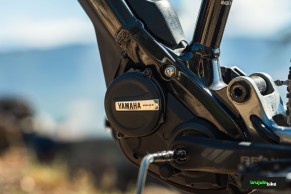
One of the features that the Yamaha motor boasts is the Zero Cadence technology, which provides assistance instantly, without any delay.
On the handlebar, next to the grip, we have a remote control to change the assistance mode or activate certain functions, such as walk assist or automatic mode. This remote control is quite small and very ergonomic and intuitive, making it easy to use without taking your eyes off the terrain.
Next to the power, we find the display, or visualization unit, which, with an LED light code, gives us information about battery, assistance level, or activation of the automatic mode.
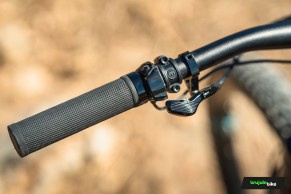
This unit has the particularity of incorporating a USB type C port to power an external device, whether it be a smartphone, GPS, or a light.
The PW-X3 motor has 5 assistance levels that we can change with the remote control. But if we want to forget about changing modes, we can select the automatic mode and the motor will change modes based on the power we apply to the pedals and will adapt to our demand. However, in automatic mode, it only alternates between the three lower modes, the two higher assistance modes are only available manually.
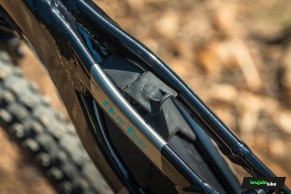
The battery mounted on the Yamaha Moro 07 has a capacity of 500Wh and is integrated, as mentioned, next to the diagonal tubes of the frame, being quite integrated, although not completely hidden, as is common nowadays.
The charging port is at the top, between the frame tubes, which protects it and, at the same time, is very accessible.
It is possible to remove the battery for separate charging but, although the battery itself is easy to remove, just by loosening a screw that does not need to be completely removed, the protective cover must also be removed, for which two other screws need to be removed.
Premium Setup for Unbeatable Quality-Price Ratio
The truth is that the Yamaha Moro 07 has an assembly that, for the price it has in the market of 4699€, can outshine some of the competition.
Starting with the suspensions, we have a Rock Shox Lyrik Select fork that provides 160mm of travel and a Rock Shox Super Deluxe Select+ shock absorber with a specific compression adjustment for this model.
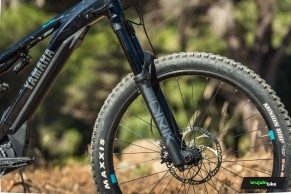
Shimano is in charge of the drivetrain with the XT group providing cassette, derailleur, and shifter. A guarantee of good performance. The cranks are Praxis with a surprising 36-tooth chainring, another example that this bike has been conceived at all times being very aware that it is an eBike and will always be used with assistance.
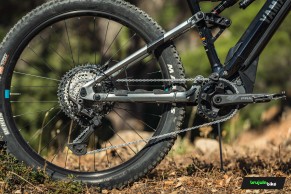
For brakes, we have the tremendous power and good feel of the Magura MT5 with 203mm discs, capable of stopping the bike in any circumstance.
The 27.5" wheels are quite simple, with 32 spokes and a very wide rim of 40mm internally that reminds us of when fattie or 27.5+ wheels were the trend. Mounted on them are 2.6" wide tires, using Maxxis with their Minion DHF model in the front and Rekon in the rear, both with EXO+ casing.
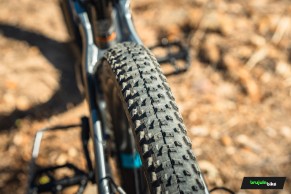
In the rest of the components, there are no major boasts but all are correct, highlighting a handlebar with 30mm rise and 35mm diameter, and a saddle signed by Yamaha on a telescopic seatpost that offers 125mm of travel on our bike, being 150mm in size L.
The Yamaha is a Different Bike
Our first impression when we saw the Yamaha Moro 07 was one of surprise at seeing a bike with such a different construction than usual. We are clear that it will not leave anyone indifferent, it is a special and daring bike.
First of all, the fact that there is no option to mount a bottle cage will limit potential users, although it is true that in this modality many bikers already use hydration backpacks as a personal preference.
Also, the wheels used by the Moro 07 are an uncommon size today. A few years ago, 27.5+ bikes entered the market, with 27.5" wheels and 2.8" or even 3" tires. They were very popular but 29" wheels and not so exaggerated tires eventually prevailed, at least for the front wheel. This 27.5" size with 2.6" tires is a middle ground that Yamaha aims to show its virtues.
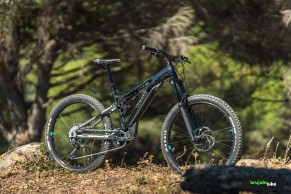
Before putting the pedals on, we weighed it on our scale and we were pleasantly surprised by the figure of 23.21kg that it showed, being even lighter than what is indicated in the catalog.
Then we made the position and suspension adjustments and started the first day of testing with the Yamaha Moro 07. The position that Yamaha puts us in is very neutral, quite comfortable, so from the first meters, we are comfortable.
We started with an easy route to get used to the motor modes and settings.
As we mentioned, the motor has 5 assistance levels, which is very positive, as we will always feel comfortable in this regard. We can also choose to disable the assistance even with the bike turned on.
We did many tests with the automatic mode, and we find it an ideal option for routes that do not include very steep and demanding slopes, as it alternates between the three lower modes. The bike detects the force we apply to the pedals and adapts to the terrain and our demand to change modes, so we can optimize battery consumption without giving up motor assistance when needed, and the best part is that we forget about thinking about those assistance level changes. However, if we want to take advantage of all the power that the Yamaha PW-X3 motor can give us, we have to opt for the manual mode.
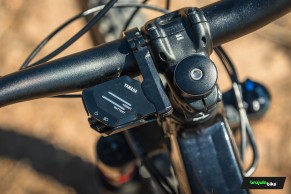
The display, with its LED light code, is very easy to interpret and on the first ride, we are already familiar with what the motor is doing at all times.
Regarding the operation of the motor itself, it must be said that the assistance is practically instantaneous, which makes the experience in this regard quite natural and allows us to start in difficult situations with ease, as well as adapt our pedaling to obstacles and overcome them easily since the motor adapts immediately.
When we stop pedaling, there is a very small delay until the assistance stops, less than in other motors. This also makes the experience more natural, although it does not always mean it is better, as this delay that some eBikes offer, when used correctly, helps to overcome obstacles without the cranks hitting the rocks. In the case of the Yamaha motor, we use the momentum, as we would on a regular bike.
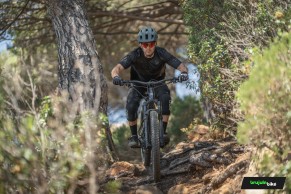
As for the sound emitted by the PW-X3 motor, we would say that it is one of the most discreet. There is a slight humming sound, but it does not increase as we increase the assistance, keeping a fairly low level even when we demand the maximum from the engine.
Yamaha Moro 07 excels on difficult terrain
When we got into more technical and difficult terrain we were pleasantly surprised with the Yamaha. First and foremost, we would say that it is an easy bike to ride, which makes us feel more confident in the face of tricky steps.
One of the great attributes of the Moro 07 that, in our opinion, makes it clearly stand out from the rest, is the ability to climb the steepest and most difficult sections. Here Yamaha takes advantage of the longer chainstay length, which helps the bike not to lift off the front and we always have some support on the front wheel and, with the excellent response offered by the PW-X3 motor in these situations, it makes all those agonizing stretches and impossible uphill turns where we almost always end up putting our foot down easier. In fact, we've broken some personal bests on trails that we've never been able to finish with any bike before.
Here we must clearly highlight the power that the PW-X3 motor is capable of giving us, but above all the way it gives us that assistance, with a very direct response to what we do with the pedals, so we have a lot of tact when it comes to controlling traction.
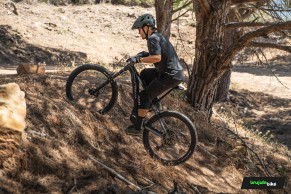
On smoother, more gradual climbs we are very comfortable on the Yamaha Moro 07 but, as we said before, it is not a bike we would ride without motor assistance, as the pedaling position is more backward than on most current bikes and we are not so far above the bottom bracket to transmit our power on the climbs.
When the terrain slopes down and we gain speed, the Yamaha stands out for the feeling of control we have. The suspensions have that sensitivity that makes our hands are rested when the complicated areas arrive.
In those steeper areas we pass with great solvency, among other things thanks to the generous ballooning of its tires.
We were also surprised by the stability and poise of the Moro 07 despite the diameter of its wheels and the fact that it is not excessively long. In those broken sections where control is compromised the bike is docile and easy to ride thanks to the performance of the suspension and the balance in the stiffness of the frame that allows some absorption of lateral stresses.
Also in our favor is the reduced standover that has been achieved in the frame, thanks to the integration of the shock absorber anchor between the top tubes, which allows us great freedom of movement.
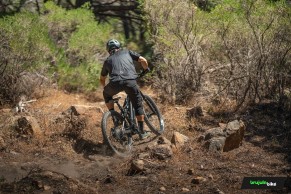
In curves with strong lateral support is where we found certain limitations to the 27.5 wheels with that big ball.
One of the terrains where we have most enjoyed the Yamaha has been on technical trails with constant changes in the slope. On very sudden climbs, the geometry helps us to have support in front and the engine response helps a lot. Also the precision and speed of its Shimano XT transmission makes it easy to keep the right gear engaged at all times.
Another area where we can find certain limitations to the Yamaha is on descents with very tight corners, where it is difficult to place the bike on the line. The long chainstays make the bike less agile in this regard and we have resorted to locking the rear wheel a bit more in some very tight corners.
And both to lock up with amazing ease, and to control the Yamaha in tight situations at high speed, we have the help of tremendously powerful brakes such as the Magura MT5, also mounted 203mm discs on both wheels, which make them one of the most powerful brakes we've tested. We also liked the feel, quite crisp but easy to control, and the ergonomics and adjustment of the lever allows us to place them in the optimal position.
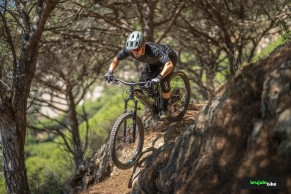
In terms of autonomy, although the 500Wh of its battery does not reach the capacities seen in some bikes today. Experience tells us that the motor's energy management is fundamental. And in our tests we can say that we have not come to have any concern about the autonomy and in most of the Enduro type routes we have done, we have finished with our arms exhausted from descending trails before approaching the limit of the battery.
Conclusions
We have enjoyed for a while a bike that, at first we did not think it would surprise us, since we have had many 27.5" eBikes in our hands, and in terms of geometry it is very restrained. But sometimes a bike finds a balance without resorting to extraordinary solutions, and Yamaha has succeeded.
The main virtue of the Moro 07 is its ease of handling and docility, which makes it an ideal candidate for those who don't have a lot of eBike experience. Of course riders with more eBike experience can benefit from a bike that provides comfort and sufficiency even in very difficult areas. It is probably not the fastest bike if we are looking to smash our times down trails, but the Yamaha Moro 07 makes us dare with everything and before any type of route that we know that the fun is guaranteed.
Yamaha has in its catalog of both urban and gravel eBikes, but as far as MTB is concerned we only find the Moro 07 and in a single mounting version. Although a special edition commemorating the 30th anniversary of the first eBike of the brand is offered. This special edition shares all the assembly and specifications, but has a special polished aluminum finish, and its price is slightly higher at 4899€, compared to the 4699€ of the standard version we tested.
Yamaha Moro 07. Specifications, weight and price
- Frame: Yamaha Patented Twintube Design
- Fork: Rock Shox Lyrik Select RC 160mm
- Shock: Rock Shox SuperDeluxe Select+ RT 210x55
- Motor: Yamaha PWSeries X3, 85Nm
- Battery: Yamaha Lithium Ion 500Wh
- Brakes: Magura MT5, 203mm discs
- Seatpost: Dropper post 30,9mm, 125mm (S/M), 150mm (L)
- Saddle: Yamaha Off-Road Cro-Mo Rail
- Handlebar: Aluminum, 30mm rise, 35mm diameter, 780mm
- Stem: Aluminum 40mm, 35mm diameter
- Crankset: Praxis AL6000, 165mm
- Chain: KMC e12 TURBO EPT
- Shifter: Shimano XT
- Rear derailleur: Shimano XT
- Cassette: Shimano XT 12v, 10-51
- Chainring: Praxis 36T
- Wheels: 27,5” Alloy, 40mm inner rim
- Tires: Maxxis Minion DHF / Rekon New 2,6” EXO+, 3C MaxxTerra
- Weight: 23.21kg
- Price: 4,699€